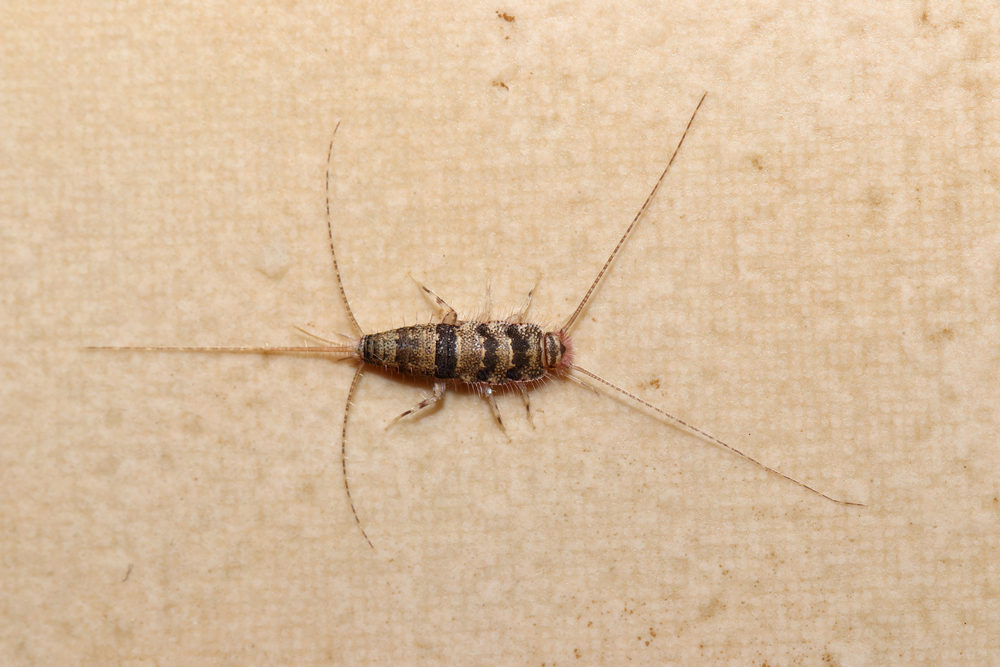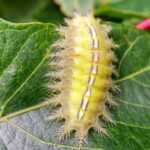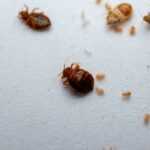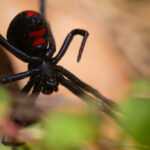Understanding Firebrats: Identification, Behavior, and Control Tips
Learn to spot firebrats, know their habits, and use simple tips to keep them away. Get easy, effective solutions to protect your home.
Firebrat Infestation: Identification and Effective Control Tips
What are firebrats and how do you get rid of them? Firebrats (Thermobia domestica) are small, wingless insects that thrive in warm, humid areas of your home. This article explains how to identify firebrats, their habits, where they live, and the best methods for controlling and preventing them.
- Firebrats are identifiable by their mottled grayish-brown coloration, flat bodies, long antennae, and three tail-like appendages.
- Effective control methods include applying targeted insecticides and diatomaceous earth in infested areas and seeking professional pest control services for severe infestations.
Recognizing Firebrats
Recognizing firebrats is crucial for effective control. These wingless insects are notable for their mottled grayish-brown coloration with darker spots along their backs, making them distinct from other pests. Their flat, carrot-shaped bodies taper toward the rear, helping distinguish them from common silverfish.
One of the most distinguishing features of firebrats is their long, slender antennae and three tail-like appendages at the end of their bodies. These appendages, combined with their flat bodies and lack of wings, make them easily recognizable among household pests.
Firebrats are often found in aggregations, so you may see several at once. When you see these characteristics, it’s a strong indication that firebrats have taken up residence in your home, and it’s time to consider control measures.
Common Habitats of Firebrats
Firebrats thrive in warm and humid environments, typically preferring temperatures around/above 90°F.
You can often find them near:
- hot water pipes
- heating units and other heat sources
- attics (especially in warmer months).
- laundry rooms, where higher humidity provides ideal harborage
These insects are moving along plumbing lines and through cracks and gaps in walls, floors, and voids. Reducing humidity levels in your home can significantly decrease the likelihood of firebrat infestations. Using dehumidifiers in damp closed spaces helps manage moisture, making your home less hospitable for these pests.
Preventive measures, such as sealing gaps and cracks in walls and foundations with caulk or sealant, are essential to keep firebrats from entering your home. Knowing their preferred habitats allows you to take proactive steps in managing their presence.
Firebrat Behavior and Diet
Firebrats are nocturnal, meaning they are most active at night. This behavior allows them to avoid predators and search for food under the cover of darkness. Their rapid movement can be startling, as they quickly dart to and from food sources.
These pests are not picky eaters. They feed on a wide range of materials, including cereals, pet foods, paper, wallpaper, cardboard boxes, and even household dust. Firebrats have a particular affinity for items high in protein, such as dried beef and dead insects, showcasing their scavenging nature. They also consume certain fungi, which may be found in damp areas. This broad dietary adaptability makes them particularly troublesome, as they can find sustenance in many common household items.
The nocturnal behavior of firebrats not only helps them find food efficiently but also makes them less visible, often exacerbating the problem before it is noticed. Understanding their feeding habits and behavior is crucial to implementing effective control strategies.
Potential Threats from Firebrats
Firebrats are more than just a nuisance pest; they can cause significant damage to household items. Their feeding habits create irregularly shaped holes in paper products and other starchy materials. This includes damage to stored food items, clothing, book bindings, wallpaper, and cardboard boxes, as these pests feed on starchy materials.
Moreover, the presence of firebrats in the home can potentially trigger allergies in sensitive individuals. By feeding on household dust and dead insects, they may exacerbate respiratory issues in sensitive individuals.
Preventing Firebrat Infestations
Preventing firebrat infestations requires a combination of cleanliness and moisture control. Here are some steps to follow:
- Regular cleaning to remove dust, debris, and dead insects is necessary since these can serve as food sources for firebrats.
- Keeping humidity levels low in your home is another important step.
- Using dehumidifiers in damp, enclosed spaces helps control moisture, making the environment less suitable for firebrats.
- Store food, including pet foods, in airtight containers to reduce access.
By following these steps, you can effectively reduce the risk of firebrat infestations in your home.
Sealing gaps and cracks in walls and foundations prevents these pests from entering your home, including those that may hide in narrow crevices and wall voids. For minor infestations, non-chemical methods (vacuuming, trapping, exclusion) and moisture reduction are often sufficient, eliminating the need for chemical insecticides.
Implementing these preventive measures significantly reduces the likelihood of firebrat infestations in your home.
Effective Control Methods
When dealing with firebrat infestations, several control methods can be employed. Diatomaceous earth and certain inorganic dusts are effective when applied to cracks, crevices, and harborages. For more targeted control, insecticides containing pyrethrin-based products (often synergized with PBO) or pyrethroids.should be applied to cracks, crevices, and dark hiding places.
It’s important to note that foggers are not recommended for treating firebrat infestations. Targeted crack-and-crevice applications are more effective. is more effective. Selecting a competent pest control service is essential for managing severe infestations. Gather multiple estimates and take your time selecting a pest control company instead of rushing into a decision.
A reliable pest control service should offer proof of qualifications, including licenses and a list of pesticides they use. Effective pest management requires cooperation between the homeowner and the pest control service, including adherence to pre-treatment instructions.
Professional Help for Severe Infestations
For severe infestations, professional help is often necessary. Understanding how to identify, prevent, and control firebrat infestations is essential for maintaining a healthy home. Recognizing these pests by their characteristic features, knowing where they thrive, and implementing preventive measures can significantly reduce their presence.
Contacting Responsible Pest & Scorpion Control ensures that your pest problems are handled effectively and efficiently, allowing you to enjoy a pest-free environment.
Frequently Asked Questions
Do firebrats bite or sting?
Firebrats do not bite or sting. Although they are a nuisance pest, it is advisable to address their presence promptly to prevent potential damage and contamination.
What is the difference between a firebrat and a silverfish?
The primary difference between firebrats and silverfish lies in their preferred environments; firebrats thrive in warm, moist locations such as around ovens and heating units, while silverfish favor damp, cooler areas like basements and closets. This distinction in habitat reflects their adaptive behaviors to different moisture and temperature conditions.
What does a firebrat do?
A firebrat primarily feeds on starchy materials such as flour, cereals, book bindings, and cardboard boxes, making them a troublesome pest as they can cause significant damage and multiply rapidly. It is essential to address infestations quickly to prevent further destruction.
How can I identify firebrats?
To identify firebrats, look for their mottled grayish-brown color with darker spots, flat and tapered bodies, long antennae, and three hair-like appendages at the end. These distinct features will help you recognize them.
Where are firebrats commonly found?
Firebrats are commonly found in warm, humid areas such as near hot water pipes, heating units, attics, and laundry rooms. These environments provide the ideal conditions for their survival.



